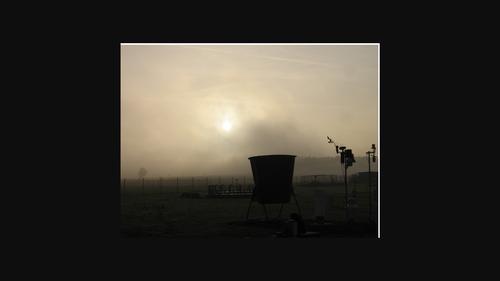Improving classification-based nowcasting of radiation fog with machine learning based on filtered and preprocessed temporal data
IF 3
3区 地球科学
Q2 METEOROLOGY & ATMOSPHERIC SCIENCES
引用次数: 0
Abstract
Radiation fog nowcasting remains a complex yet critical task due to its substantial impact on traffic safety and economic activity. Current numerical weather prediction models are hindered by computational intensity and knowledge gaps regarding fog-influencing processes. Machine-Learning (ML) models, particularly those employing the eXtreme Gradient Boosting (XGB) algorithm, may offer a robust alternative, given their ability to learn directly from data, swiftly generate nowcasts, and manage non-linear interrelationships among fog variables. However, unlike recurrent neural networks XGB does not inherently process temporal data, which is crucial in fog formation and dissipation. This study proposes incorporating preprocessed temporal data into the model training and applying a weighted moving-average filter to regulate the substantial fluctuations typical in fog development. Using an ML training and evaluation scheme for time series data, we conducted an extensive bootstrapped comparison of the influence of different smoothing intensities and trend information timespans on the model performance on three levels: overall performance, fog formation and fog dissipation. The performance is checked against one benchmark and two baseline models. A significant performance improvement was noted for the station in Linden-Leihgestern (Germany), where the initial F1 score of 0.75 (prior to smoothing and trend information incorporation) was improved to 0.82 after applying the smoothing technique and further increased to 0.88 when trend information was incorporated. The forecasting periods ranged from 60 to 240 min into the future. This study offers novel insights into the interplay of data smoothing, temporal preprocessing, and ML in advancing radiation fog nowcasting.

基于过滤和预处理时间数据的机器学习改进基于分类的辐射雾临近预报
辐射雾临近预报是一项复杂而又关键的任务,因为它对交通安全和经济活动有重大影响。目前的数值天气预报模式受到计算强度和雾影响过程知识差距的阻碍。机器学习(ML)模型,特别是那些采用极限梯度增强(XGB)算法的模型,可能会提供一个强大的替代方案,因为它们能够直接从数据中学习,快速生成临近预测,并管理雾变量之间的非线性相互关系。然而,与循环神经网络不同,XGB本身不处理时间数据,而时间数据对雾的形成和消散至关重要。本研究提出将预处理的时间数据纳入模型训练,并应用加权移动平均滤波器来调节雾发展中典型的大幅波动。使用时间序列数据的ML训练和评估方案,我们从总体性能、雾形成和雾消散三个层面对不同平滑强度和趋势信息时间跨度对模型性能的影响进行了广泛的自引导比较。性能根据一个基准和两个基线模型进行检查。在Linden-Leihgestern(德国)的站点,性能得到了显著的改善,在应用平滑技术后,初始F1得分为0.75(平滑和趋势信息合并之前)提高到0.82,在纳入趋势信息后进一步提高到0.88。对未来的预测周期为60至240分钟。这项研究为数据平滑、时间预处理和机器学习在推进辐射雾临近预报中的相互作用提供了新的见解。
本文章由计算机程序翻译,如有差异,请以英文原文为准。
求助全文
约1分钟内获得全文
求助全文
来源期刊
CiteScore
16.80
自引率
4.50%
发文量
163
审稿时长
3-8 weeks
期刊介绍:
The Quarterly Journal of the Royal Meteorological Society is a journal published by the Royal Meteorological Society. It aims to communicate and document new research in the atmospheric sciences and related fields. The journal is considered one of the leading publications in meteorology worldwide. It accepts articles, comprehensive review articles, and comments on published papers. It is published eight times a year, with additional special issues.
The Quarterly Journal has a wide readership of scientists in the atmospheric and related fields. It is indexed and abstracted in various databases, including Advanced Polymers Abstracts, Agricultural Engineering Abstracts, CAB Abstracts, CABDirect, COMPENDEX, CSA Civil Engineering Abstracts, Earthquake Engineering Abstracts, Engineered Materials Abstracts, Science Citation Index, SCOPUS, Web of Science, and more.

 求助内容:
求助内容: 应助结果提醒方式:
应助结果提醒方式:


